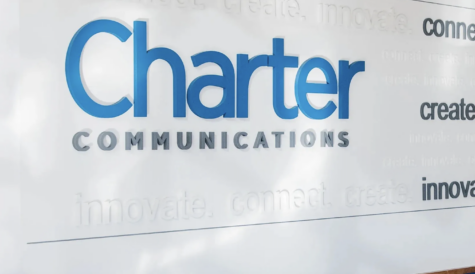Shifting sands: pay TV in the Middle East
 While MBC continues to dominate free TV in the Middle East, moves by beIN Media and the development of digital platforms could change the balance in pay TV. Rebecca Hawkes reports.
While MBC continues to dominate free TV in the Middle East, moves by beIN Media and the development of digital platforms could change the balance in pay TV. Rebecca Hawkes reports.
The past year has seen the three big purveyors of premium TV content in the Arab World remain unassailably dominant: free-to-air broadcaster MBC still commands huge pan regional audiences and the lion’s share of advertising revenue, while the multi-territory pay TV space continues to be governed by OSN and beIN Media.
Yet, below the surface there have been some significant developments in the subscription sector in the Middle East and North Africa (MENA). Qatar-based beIN Media has expanded its content offering from sport to also encompass entertainment, US video streaming giant Netflix has entered the regional arena, and OSN has endured an executive re-shuffle following a drop in subscriber numbers.
After last year’s 10% rise in the number of pay TV households in MENA (to 4.95 million) and pay TV revenues surpassing the billion-euro mark for the first time, the growth of MENA pay TV households will, this year, lose some of its pace, according to analysts IHS Markit.
“Our estimations point to OSN losing around 50,000 subscribers year-on-year between the end of 2015 and end of 2016,” says Constantinos Papavassilopoulos, technology analyst at IHS Markit. “This is logical to expect, given the churn rate between OSN subscribers almost doubled from just 16% annually in 2013 to 30% in 2015.”
As a result, the consultancy expects the total number of MENA pay TV households to cross the five million mark, “but only just”, at the end of 2016.
This is still a 2.5% rise overall on 2015, but this represents, says IHS, the lowest growth rate in the region’s pay TV penetration base since 2010.
beIN entertainment
The rise in pay TV households, albeit small, is attributed by IHS Markit to the extra subscribers picked up by IPTV services provided by Ooredoo in Qatar and STC in Saudi Arabia, and by beIN Media – which this year completed its acquisition of Turkish pay TV platform Digitürk and bought film and TV studio Miramax. OSN’s regional rival also expanded its portfolio to include movies, general entertainment, factual and children’s HD content in November 2015.
“beIN was very strong in attracting a male audience with its premium sports content but it had reached a plateau with its subscriptions, which were in the region of 3.4 million or 3.5 million at the end of 2015,” says Papavassilopoulos. “By expanding into entertainment it is approaching another demographic to try and cement its position as the dominant pay TV operator.”
With OSN having already sewn up compelling content deals for years to come with major Hollywood studios such as Disney-ABC Studios, NBCUniversal, Warner Bros, HBO, Paramount, Fox, Sony and MGM, beIN is playing catch-up – entertainment-wise – and building its base. This year has seen it targeting kids content, having added Cartoon Network, Discovery Kids, CBeebies, and DreamWorks Animation, and created the beJunior channel with German producer Studio 100 Media.
The strategy is of significance in a region where conservative family values are the norm, and where families often watch TV together – especially during the Muslim holy month of Ramadan. Family-centric programming could well boost beIN’s penetration of the entertainment market, as could the addition of Turkish content from Digitürk – if, as expected, beIN decides to utilise its new asset for MENA audiences.
Arabic programming, however, seems conspicuously absent from beIN’s current entertainment package. OSN’s 26 Arabic channels, including its premium Ya Hala brand are, in contrast, very valuable, particularly set alongside its premium US content – plus Turkish, South Asian and Filipino entertainment.
“From cutting edge programming such as Saturday Night Live Arabia, to same day and time premieres [as the US/UK] of key series such as Westworld and Divorce, and our specialty channels such as OSN First HBO HD, we are constantly pushing ourselves to bring exclusive and nowhere else content to our viewers,” says Emad Morcos, chief content officer, OSN.
Acquisitions such as these differentiate OSN’s value proposition in the market, says Morcos, adding: “We have also evolved our relationships with content providers and engage them in local content on our western channels. Most recently, we have localised E! News and there will be more local content coming on Food Network and Comedy Central HD.”
IHS Markit’s Papavassilopoulos concurs: “OSN has valuable content, experience in providing entertainment and a reputation for cooperation.” He cites as regional examples its partnership with MBC in creating the MBC + Drama channel; its active involvement in the regional anti-content piracy coalition; and its tie-up with Abu Dhabi Media to exclusively carry its premium channels, adding that “beIN has instead gone it alone, and its entry in the market has sometimes created counter alliances”.
Certainly the rivalry between OSN and beIN looks set to continue, with neither expected to emerge as an out-and-out market leader over the next five years.
By the end of 2016, Digital TV Research estimates OSN will have around 1,153,000 subscribers and beIN will have 823,000. Simon Murray, principal analyst, Digital TV Research thinks that come 2021 the two operators “will be neck-and-neck”, each with 1.6 million subscribers.
Although OSN’s subscriber base seemed to have fallen in the first quarter of 2016, parent company KIPCO hasn’t provided an explanation. “We are assuming that this is some sort of readjustment and that subscription numbers will increase from now on,” says Murray.
Between the two regional pay TV powerhouses, OSN and beIN account for between 65% and 66% of pay TV subscribers and 70% of the subscription sector’s revenues, according to IHS Markit. Along with free-to-air giant MBC, they have the financial muscle to retain control of the market’s premium content for the immediate future, the research group believes.
Ready, steady, Netflix
As part of its global expansion, Netflix arrived on the scene with a MENA service in January 2016, but like other subscription video-on-demand (SVOD) services, has not yet made a huge impression on the region’s entertainment sector.
IHS Markit estimates Netflix’s MENA subscriber figures will be well below 200,000 at the end of 2016, while Digital TV Research suggests the region will provide Netflix with just 62,000 paid up subscribers by the end of the year.
Going forward, Netflix and other locally-based SVOD players such as Icflix, Istikana, Starz Play Arabia, OSN Go and beIN Connect are looking at significant growth – albeit from an estimated base of 500,000 at the end of 2016 (IHS Markit). However, this sector-wide figure is predicted to rise to 1,317,000 by 2021, according to Digital TV Research.
A lack of Arabic content and issues with piracy may potentially be stunting the immediate growth of Netflix. However, another reason SVOD as a sector is yet to take MENA by storm is the inconsistent availability of fixed broadband and affordability of data if the region is considered as a whole. While Qatar and the UAE boast 85% penetration of fibre to the home, elsewhere, in countries such as Algeria, Egypt and Tunisia, online connectivity often presents obstacles for consumers.
This, and the difficulty of billing a service across multiple territories which have low recognition of credit cards, is why tie-ups with established mobile and IPTV operators are crucial to the expansion of SVOD services in MENA, says Maaz Sheikh, CEO of Starz Play Arabia.
“Our greatest challenge is that we operate in 19 countries, and we have found that in order to grow and create a presence in all the key markets we must integrate with multiple operators,” he says.
For example, in the UAE Starz Play’s primary partner is Etisalat; in Qatar and Tunisia it’s Ooredoo; in Saudi Arabia it’s STC; in Morocco, Maroc Telecom; in Egypt, Vodafone. Brand recognition helps attract customers, and joint marketing initiatives also pay dividends, says Sheikh.
With box-set attractions and Hollywood-heavy content, Starz Play Arabia claims to have been adding between 30,000 and 40,000 subscribers a month to its SVOD service since May or June 2016 – a growth spurt that coincides with new partnership deals with major telcos in Saudi Arabia, Egypt and Morocco.
The arrival of Netflix in the Middle East has added another dimension to proceedings. “We were dreading it, but it has actually been positive for us. It has brought category recognition to the SVOD space in MENA,” says Sheikh.
“Plus, when Netflix launched the global service it had to treat the virtual private network (VPN) menace. As it had to show growth in international markets, it had to shut down international servers, which meant local subscribers had to subscribe to local services. When we are compared to Netflix Middle East – which has a different content proposition to its US or UK service – our content is very strong, more compelling,” he says.
Certainly Netflix’s content proposition in MENA is weaker than its offer in the US, as the first-to-air rights of significant titles such as House of Cards are currently held by OSN in the region. So, in the first quarter of 2016, Netflix offered 611 TV series in the Arab world compared to 5,379 in the US – with a uniform monthly subscription of between US$7.99 (€7.30) and US$11.99 across the region.
Whether it will retain the ‘one size fits all’ pricing policy across such an economically diverse region remains to be seen. Since its launch Starz Play has reduced subscription charges to US$4.99 in the North African countries of Egypt and Morocco, compared to the US$7.99 consumers are required to pay in the wealthy Gulf States.
While Netflix focuses more on developing its original content, its Dubai-based competitor has been acquiring Arabic content. “It is too soon for co-productions,” says Sheikh. Instead Starz Play Arabia has been dubbing its core Hollywood and western content into both Arabic and French for the Maghreb countries. That, and integrating the Starz Play service with carriers and IPTV networks for local billing – “which is where we currently have the advantage over Netflix,” claims Sheikh.
Meanwhile OSN, which has offered its own SVOD offer OSN Go since 2014, believes Netflix’ arrival has helped educate people in the region about over the top (OTT) video services too. The US streaming company has also, says OSN’s Emad Morcos, educated people on “how to engage with content via OTT. At the same time, it is a competitor because, at the core, we are all content providers vying for subscribers”.
What sets OSN apart from Netflix and other SVOD-only providers, says Morcos, is its “privileged position of being able to reach audiences via multiple devices and mechanisms that cater to all types of viewing behaviours; those that are more comfortable with traditional linear viewing methods and those that bypass the box and go straight to digital intake.”
As well as linear and SVOD viewing, OSN offers a catch-up and a 21 channel live streaming service called OSN Play, and video-on-demand via OSN on Demand. These offer recently aired content, box sets and thematic collections.
“We are continually developing and expanding this offering. We have obtained more rights from all our partner studios and networks, which means we now have more catch-up and on-demand content than any other player in the region,” says Morcos.
Yet an even loftier position could be claimed by Dubai-based free-to-air broadcaster MBC: that of undisputed dominance in the region’s audiovisual scene, in terms of viewing figures, advertising revenues and multi-platform engagement with its audience.
The Dubai-based media group can draw an estimated satellite TV audience of around 100 million for the finales of its flagship Arabic shows. Indeed, Arab Idol, The Voice and Arabs Got Talent have a cumulative reach of over 60% of MENA satellite television households, according to a 2014 regional reach study.
MBC also offers VOD and catch-up TV via its platform Shahid.net, which it launched in July 2011, along with premium digital content on its subscription sister platform Shahid Plus, and has gained 20 million subscribers via YouTube. MBC’s Facebook fans now number 244 million and it has 55 million followers on Twitter.
The group’s ratings have “created an impenetrable barrier” between it and the regions other broadcasters, says Mazen Hayek, official spokesman and group director of PR, commercial, and corporate social responsibility, MBC Group. “However, we are not a media group that takes our successes for granted. Nor do we take our competition for granted, but SVOD is still not a game changer for the masses [in MENA]. Will Netflix invest a few hundred million dollars a year to create traction? We’re not seeing that yet, or seeing any great impact,” Hayek adds.
Location, location, location
What is having an impact on MENA’s mass audience this year, says MBC’s Hayek, are the localised versions of US formats Top Chef and Project Runway, which have been recently added to MBC’s programming. Although the group has to rely on ‘guesstimate’ figures as most countries in the region lack reliable TV audience measurement data, “initial indications are that both shows are being well received and audience size is comparable to the launches of Arabs Got Talent and X Factor Middle East,” he says.
Project Runway Middle East, which is licensed by FremantleMedia and is a partnership project with renowned Lebanese fashion designer Elie Saab, showcases young designers in the Middle East. It will reach its finale – live in Dubai Design District – on December 10. Meanwhile, a new season of Arab Idol will take to the air in November, and Arabs Got Talent and The Voice Middle East will return to MBC schedules in 2017.
“These reality shows are very entertaining but also motivational. They are a platform for artistic self-expression and self-identification, and draw on a great pool of talent in the Arab World, where 180 million people are under the age of 30,” says Hayek. “They are produced locally to the strictest international standards.”
MBC has been instrumental for many years in producing, distributing and promoting high-quality Arabic programming, and also for employing staff from countries across the Middle East and North Africa, which helps build its pan-regional appeal: strategies commentators think others could learn from.
Marketing content to the region’s tech-savvy youthful demographic is also key to pay platforms going forward. As is the exploration of untapped pay TV markets such as Egypt and Iran, thinks Constantinos Papavassilopoulos, technology analyst from IHS Markit.
“At the end of 2016, pay TV penetration will be slightly over 10% of the 47.5-48 million TV households in the 14 countries where we provide pay TV data. But Iran alone, for instance, which is not included in our data, has around 14 to 15 million TV households,” says Papavassilopoulos.
“Overseas satellite TV reception is still illegal in Iran, but over 70% of households in Tehran have satellite dishes. There is an audience. However, broadcasters would need to cooperate with local Iranian producers to make Farsi content that will have an impact on Iranian viewers. Repurposing content made for Arab audiences, as MBC tried with MBC Persia, does not work,” he warns.
French-language programming and keener pricing could also help improve the pay TV footprint in the North African countries of Morocco, Tunisia and Algeria, where generations have been raised watching European content received via analogue TV transmission.
In recognition of this, Starz Play Arabia has, this year, launched a French version of its interface and its apps, and has added French audio to its Hollywood content. Although it is taking a lead on OSN in providing dubbed French shows, the SVOD operator admits that its French content is still limited.
Of course it remains to be seen if Netflix will follow suit, and provide more localised services within the region, as it has recently done for the Turkish market (it now provides streamed video content in Turkish and bills subscribers in local currency).
But amid the general uncertainty, OSN, beIN and MBC look set to retain their combined status as home to the most attractive premium content in the region – whether paid for or free-to-air.
They will be aided, no doubt, by MENA’s ever expanding talent base and state-of-the-art facilities, fuelling the production of even greater quantities of high quality local programming from the Arab world.



